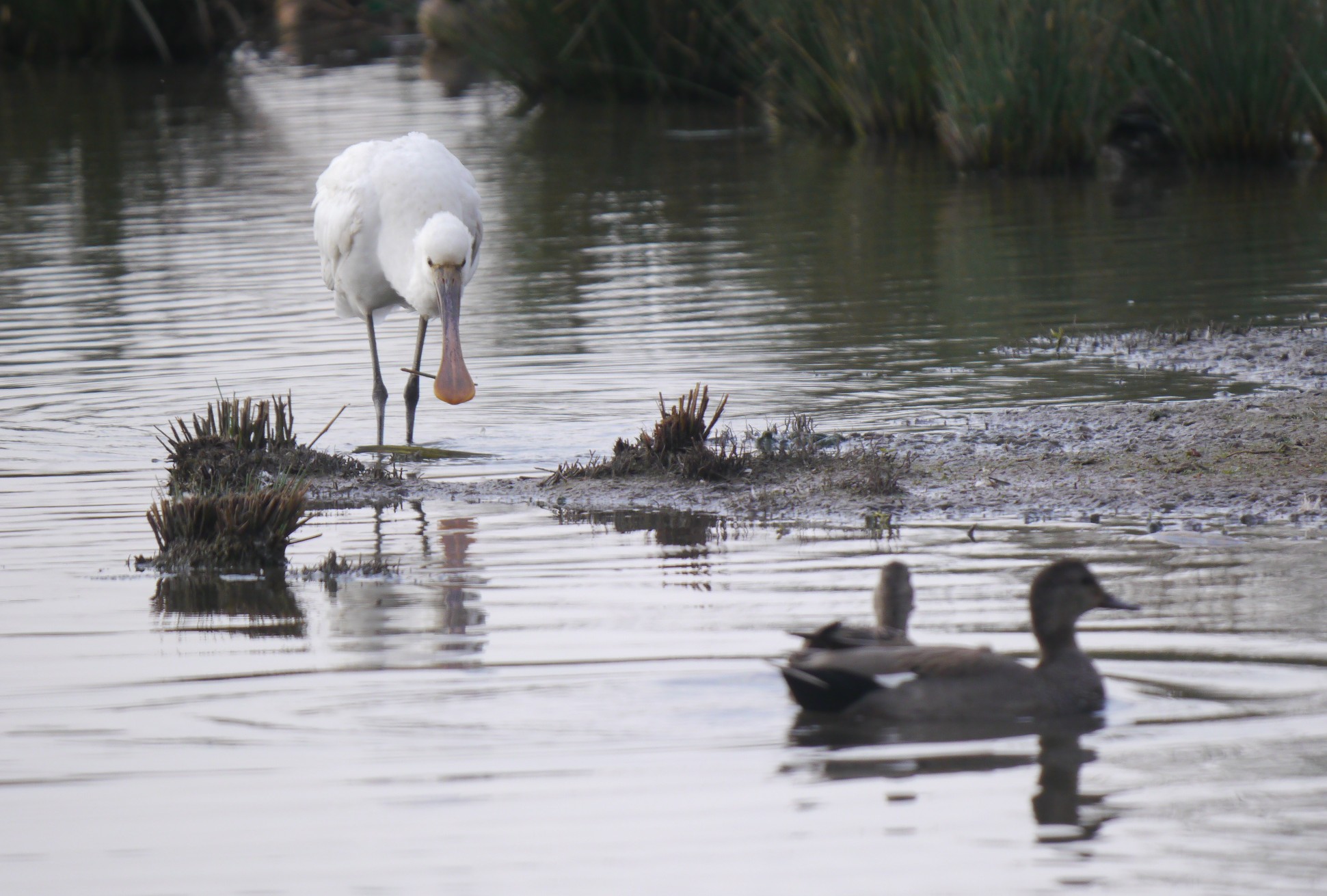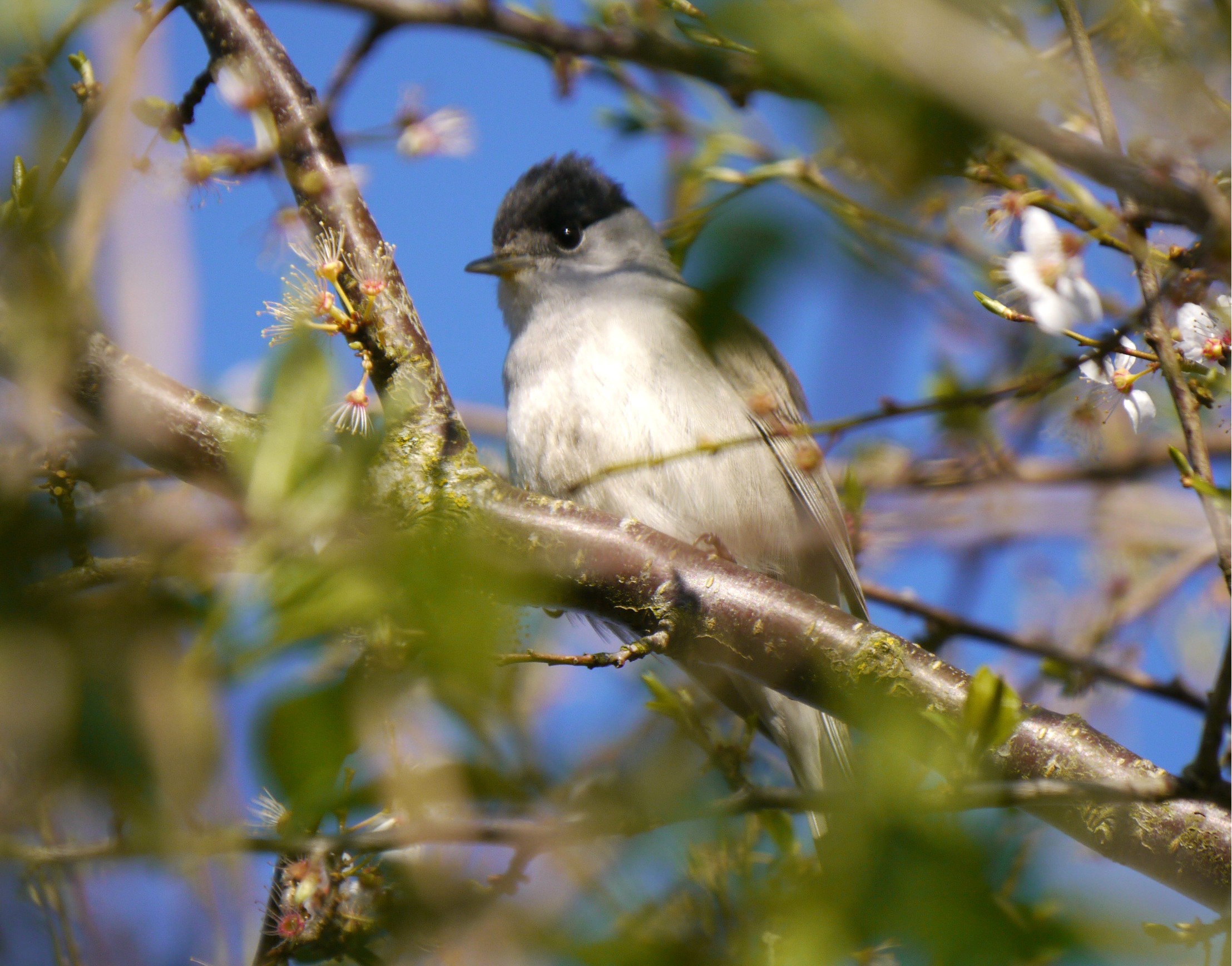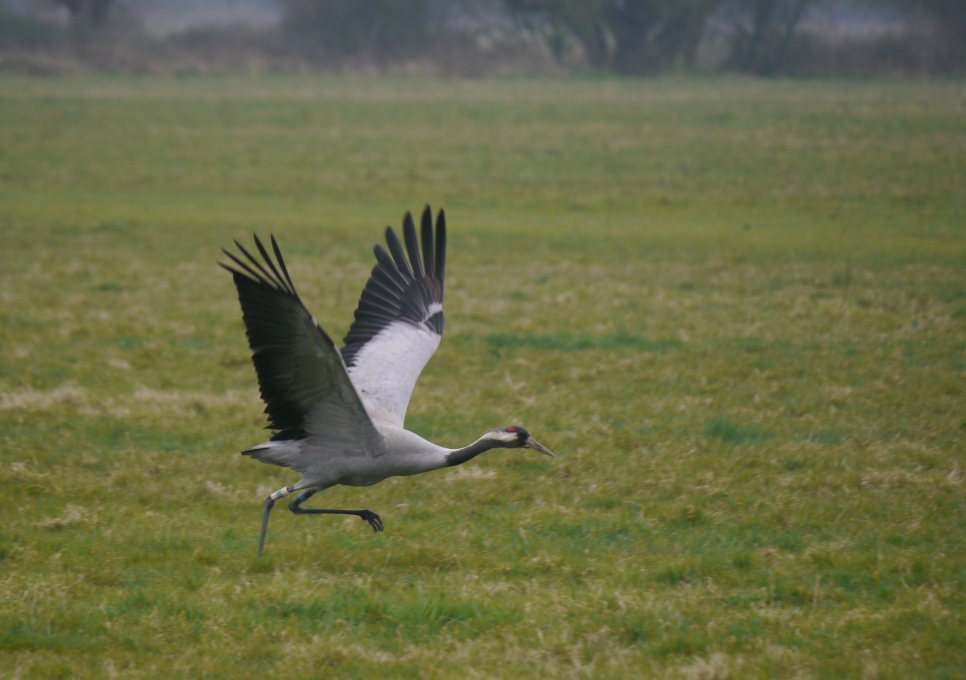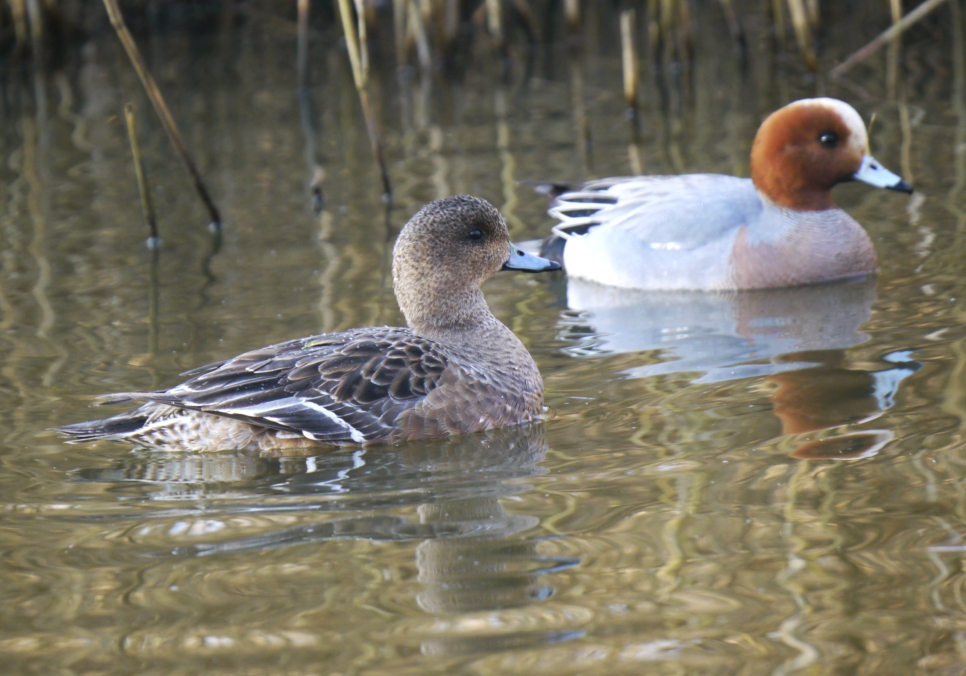Sightings and news to week ending 30 March
An ongoing record of what's been seen around the reserve.
Sunday 30 March
A cool, sunny, still morning high tide that only just overtopped the Dumbles, the Middle Point area flooded but it didn't reach the scrape or saltpans.
Estuary Tower
Thirty Golden Plover over high looking to settle but Peregrine activity keeping them on the go, worth checking Bottom New Piece later. Single Sand Martin through. A Little-ringed Plover was very mobile between Tack Piece and the Dumbles. Nine Ringed Plover and a single Dunlin on the Dumbles over high tide with 8 Wigeon, 15 Curlew, 6 Oystercatcher, 12 GBB Gull, c70 Common and c30 Black-headed Gulls. 10 Avocet on the scape with 2 White Wagtails. 32 Teal and 4 Shoveler. Willow and Cetti's Warbler, Chiffchaff and Blackcap all singing along the pathway. Reed Buntings visiting the feeding cage below the hide. Pair of Marsh Harriers, 2 Buzzards and the Peregrine with a Red Kite through. A Snipe in the cut area of reeds on Pill Box Pool, Little Egret and 13 Wigeon also. Meadow Pipits, Skylarks and Linnets also noted.
Long Ground Pool
Pair of Little Grebe.
Tack Piece
46 Wigeon, 48 Shoveler, 70 Teal, Spoonbill. A Snipe from Martin Smith Hide.
South Lake
Adult breeding plumage Mediterranean Gull joined the Black-headed Gulls. One of the two Spoonbills was on the south causeway near Hogarth Hide. 82 Avocets and 64 Black-tailed Godwits early morning.
Top New Piece
71 Teal, 2 Avocet, 5 Black-tailed Godwit, pair of Oystercatcher, 6 Wigeon.
Saturday 29 March
Bottom New Piece
Ten Golden Plover.
Tack Piece
44 Shelduck, 1 Curlew, 58 Teal,50 Shoveler,1 Redshank,79 Wigeon, 2 Cetti's Warbler, 53 Barnacle Geese and Buzzard.
Estuary Tower/Dumbles
Ten White fronted Geese, 41 Teal,12 Shoveler, 8 GBB Gull, 2 Avocet,1 Little Egret, Peregrine, Marsh Harrier and 15 Barnacle Geese.
South Lake
83 Avocet, Cranes Ruby and mate, 18 Black-tailed Godwit 18, Kestrel, 20 Gadwall, 7 Oystercatcher, 2 Spoonbill, Little Egret, 25 Shoveler, Great Crested Grebe, 8 Cormorant 8, 2 Common Gull.
Top New Piece
8 Wigeon, 10 Tufted Duck, 62 Teal, 2 Gadwall, 40 Shelduck, Redshank and Black-tailed Godwit.
Friday 28 March
Estuary Tower/Dumbles
Two Little Stints on the scrape.
Wednesday 26 March
Kingfisher Hide
126 Russian White-fronted Geese (but flock moved to Dumbles) Kestrel, Sparrowhawk, Bullfinch, male and female Kingfisher, male and female Reed Bunting, Treecreeper, Mute Swan nesting and Shelducks.
Tack Piece
Two White Wagtail, two Spoonbill, Tack Piece- a Little-ringed Plover dropped in briefly but flew off again NE, 2 Pied Wagtails, a few Pintail with the Teal/Wigeon flocks + 4 Cranes.
South Lake
63 Avocet, 15 Black-tailed Godwit, 16 Tufted Duck, 32 Shoveler, 24 Gadwall, 2 Oystercatcher.
Top New Piece
129 Wigeon, 20 Shelduck, 23 Avocet, 124 Teal, 24 Black-tailed Godwit, Redshank, Little Egret, Cetti's Warbler, Buzzard.
Tuesday 25 March
Estuary Tower/Dumbles
Two Little Stints on the scrape and islands among the ducks. Male Marsh Harrier and female Kestrel both hunting
South Lake
Willow Warbler, Blackcap and Chiffchaff all singing at Discovery Hide, 42 Black-tailed Godwit, 74 Avocet, 2 pairs of Oystercatcher, GC Grebe, 10 Cormorant, flocks of Tufted Duck, Teal and Gadwall.
Tack Piece
Flock of six Spoonbill still on scrape shore, three White Wagtails with the Pied Wagtails, 5 Cranes, 2 Redshank, 2 Curlew, flocks of Wigeon with 7 Pintail, 50 Teal and 30 Shoveler.
Top New Piece
99 Teal, 5 Lapwing, 2 Oystercatcher, 90 Wigeon.
Decoy/Withy Bed
Blackcap singing.
Kingfisher Hide
The pair of Kingfishers and 126 Russian White-fronted Geese on the Four Score Ground.
South Finger
A Firecrest and three Goldcrest in the hedge and scrub near to the Dragonfly Pond. Willow Warbler singing.
Monday 24 March
A huge NE movement of 1000+ Kittiwake occurred yesterday with more seen birds this morning, a party of 15 were over the Severn in the murky conditions this morning but the 300+ seen further downriver at Severn Beach were not picked up by observers here. A new arrival involving four Spoonbills was of note, they joined the two that have been on site to make six and all gathered in the Tack Piece for a time. As ever they were mobile and flew off but returned.
Lapwings (around 25) and Redshank (8) are in territorial areas with the former performing the tumbling display flights when they attract an onlooker. The Bottom New Piece (from Kingfisher Hide) and Top New Piece (from Van de Bovenkamp and Zeiss Hides) are best to catch up with pairs of these waders.
The Rooks are very active, over 130 nests have now been built.
Other sightings for today included the following.
Tack Piece
At least a couple of White Wagtails and a pair of Pied Wagtails.
Willow/Knott Hide
Two Swallows again feeding over the Pill Box Pool.
South Lake Discovery Hide
Willow Warbler singing, 70+ Avocet flushed by a hunting Goshawk early morning, numbers increased to 91 here later. Two pairs of Oystercatcher, among the ducks with 47 Gadwall of note. A flock of 25+ Sand Martins fed over the lake.
South Finger
Willow Warbler singing near the viewing screen. Over 100 Russian White-fronted Geese were in the Four Score Ground.
Top New Piece
Flocks of Avocet, Shoveler, Teal, Wigeon, Shelduck and a few pairs of Redshank and Lapwing, 4 Russian White-fronted Geese came in to drink but returned to the flock on the Four Score Ground.
Rushy Hide
Non-breeding plumage Bar-tailed Godwit with 28 Black-tailed Godwit on the lower pond for a time this morning, it was also seen on South Lake. A few Pintail and a pair of Pochard among the usual duck species. A male Blackcap was singing outside the hide.
Cranes
Display dancing and mating all noted so far this season with some nest building at South Lake and Top New Piece. A quartet of young birds are often on the Tack Piece plus an older ringed bird; Evie.
Kingfishers
Brilliant viewing down at the Kingfisher Hide, the male and female are attending the nest hole and must now be laying eggs as they prepare to incubate. It's a good time to visit to see them. Although you can encounter these birds anywhere on site, this is the best place to see them. We often have Guides in the Hides on duty to help you to gain good views.



